#hywel region
Text
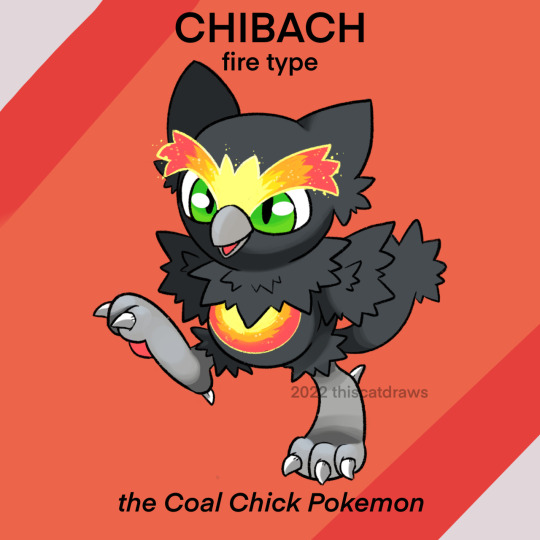
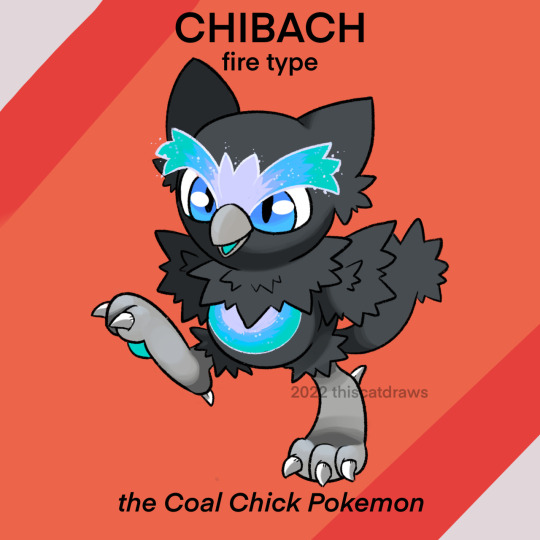
NAME: Chibach
The Coal Chick Pokemon
TYPE: Fire
ABILITY: Blaze (Powers up Fire-type moves when the Pokémon's HP is low.)
HIDDEN ABILITY: Flame Body (Contact with the Pokémon may burn the attacker.)
EGG GROUP: Flying
HEIGHT: 2'00"
WEIGHT: 8.2 lbs
DESCRIPTION: This headstrong Pokémon is born yellow, but quickly become black with coal as they help miners with their work. They are honorable and brave by nature, only following a trainer who they deem pure of heart.
INFO: This Pokémon is based off a griffon! Its name comes from Chick + 'bach' (small in Welsh). Its concept comes from the phrase 'canary in a coalmine', as coal-mining is very important to Welsh history and economy.
41 notes
·
View notes
Note
Hi, I wondered about this obvious but puzzling question, did Henry VII speak Welsh?
Hi! There is no evidence per se that he did, but some hints suggest he spoke Welsh to some degree or at least understood it. There is evidence that Herbert's court in Raglan Castle, where Henry was raised from ages 4 to 13, was Welsh-speaking. William Herbert was a great patron of Welsh poets who wrote for his family: a great example is the poem by Hywel Swrdwal in celebration of William Herbert Jr's marriage to Mary Woodville and his knighting by the king at Windsor. According to the Welsh poetry tradition of that time, those poems were made to be read aloud to audiences in a gathering. That specific poet says William Herbert spoke their tongue (translation below):
The stag of noble Raglan is strongest, / A mighty reach, against any mere fawn / No man under his authority / Will take his golden collar away to play with it / The foremost king of Britain and its realm / Gave his sister to him / He held a great wedding-feast in Windsor / For this man, in his royalty / A generous feast for our lord who is of our tongue, / May he be seen again as a prince!*
So Henry VII would have grown up in that kind of Welsh-speaking environment. It's also known that Herbert took Henry with him around Wales, such as the time he besieged Henry's uncle at Harlech and took the boy with him to see his uncle's defeat (awkward......).
Another hint is that Henry had a Welsh nurse whom he rewarded after Bosworth named Joan, wife of Philip ap Howell, who was from Carmarthen, a region that was mostly Welsh-speaking. It's plausible that she would have taught him some Welsh. Less conclusive, there's a Welsh poem that wishes that the young Earl of Richmond would never become a 'Saesnaeg', that is a Saxon, an Englishman. I think the poet could only mean it symbolically, which might suggest Henry grew up in a strong, culturally Welsh, environment.
Thanks to Vergil we know Henry had a formal education in English and Latin, but he doesn't tell us if Henry ever learned Welsh by being raised by Welsh-speaking people (which is likely in my opinion). Judging from his march to Bosworth and how he made use of Welsh prophecies, it's very clear Henry had a strong formation in Welsh culture. In my opinion it's likely that he at least understood some of it.
*‘Urddo Wiliam Herbert Ieuanc yn Farchog o’r badd gan Hywel Swrdwal’; translation by Dr Barry Lewis. Notice how the poet calls Mary Woodville the king's sister. Another interesting detail that I speculate on is that Herbert took Henry to Windsor for that feast, and this is how the Earl of Nottingham was able to say to the pope in 1486 that he knew Henry VII for 20 years.
60 notes
·
View notes
Text

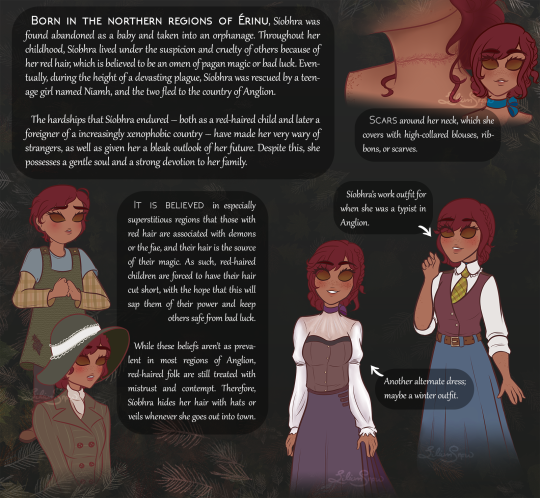
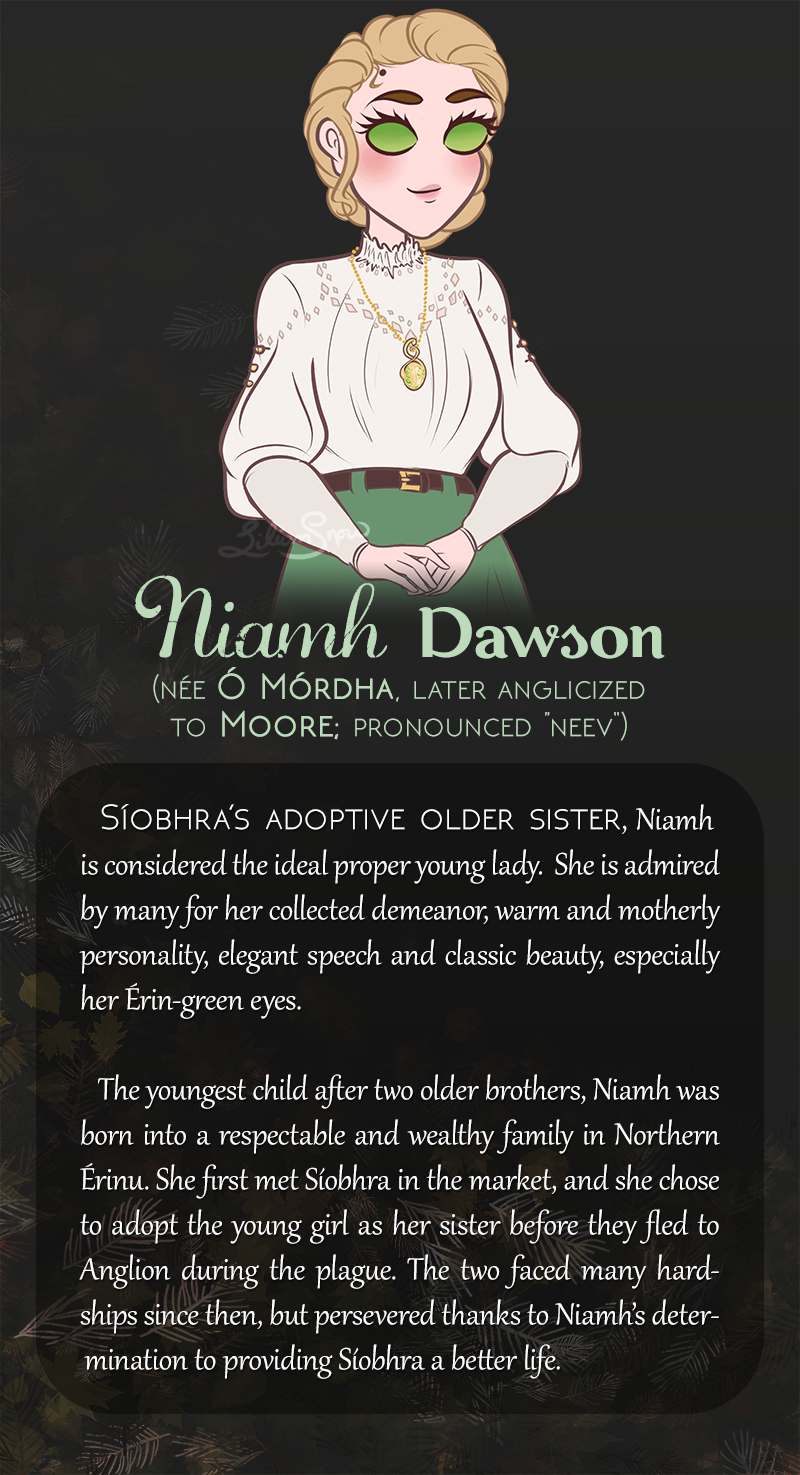


I've had this idea for a "Beauty & the Beast"-inspired horror/dark fantasy romance I've been daydreaming about for a few months now, and I thought I'd upload some little doodles and ideas for some of the main characters. Featuring the protagonist (our “Beauty”), Síobhra Moore, along with her family.
I can’t promise I’ll upload any additional related content in the future, but you’re free to ask me any questions about it on my blog @storybook-lili.
All characters and ideas belong to me. Do not post/upload to other sites.
For anyone who has difficulty reading the text from the images, I’ll provide them for you below the cut:
[Image 1]
Síobhra Moore:
[Text Box 1]: Síobhra (pronounced “shee-fra”) is a young lady in her mid-twenties and the protagonist of the story. Modest, dependable and sensitive, she lives with her adoptive older sister and her family
After the family are driven out of their home by the military, they receive a letter from the enigmatic Mr. Hywel, inviting them to his manor in the country of Caledonia. Mr. Hywel resides near a looming forest, far apart from the rest of the town. When the family arrive, they soon discover why – he possesses the head of an owl, which they are warned to never speak of in his presence.
During their stay, Síobhra slowly uncovers the mystery and horrors of the forest, while also coming to terms with her past that continues to haunt her. Over time, she grows closer to Mr. Hywel, who carries a past and burden as dark and tragic as the forest that he must watch over.
[Text Box 2]: Favourites: Singing, dancing, the colour blue, painting, spring, slow life/healing stories, berry salad, muffins, bird songs.
[Image 2]
[Text Boxes on the Left, from top to bottom]:
[Text Box 1]: Born in the northern regions of Érinu, Síobhra was found abandoned as a baby and taken into an orphanage. Throughout her childhood, Síobhra lived under the suspicion and cruelty of others because of her red hair, which is believed to be an omen of pagan magic or bad luck. Eventually, during the height of a devasting plague, Síobhra was rescued by a teenage girl named Niamh, and the two fled to the country of Anglion.
The hardships that Síobhra endured – both as a red-haired child and later a foreigner of a increasingly xenophobic country – have made her very wary of strangers, as well as given her a bleak outlook of her future. Despite this, she possesses a gentle soul and a strong devotion to her family.
[Text Box 2]: It is believed in especially superstitious regions that those with red hair are associated with demons or the fae, and their hair is the source of their magic. As such, red-haired children are forced to have their hair cut short, with the hope that this will sap them of their power and keep others safe from bad luck.
While these beliefs aren’t as prevalent in most regions of Anglion, red-haired folk are still treated with mistrust and contempt. Therefore, Síobhra hides her hair with hats or veils whenever she goes out into town.
[Text Boxes on the Right, from top to bottom]:
[Text Box 3]: Scars around her neck, which she covers with high-collared blouses, ribbons, or scarves.
[Text Box 4]: Síobhra’s work outfit for when she was a typist in Anglion.
[Text Box 5]: Another alternate dress; maybe a winter outfit.
[Image 3]
Niamh Dawson (née Ó Mórdha, later anglicized to Moore; pronounced “neev”): Síobhra’s adoptive older sister, Niamh is considered the ideal proper young lady. She is admired by many for her collected demeanor, warm and motherly personality, elegant speech and classic beauty, especially her Érin-green eyes.
The youngest child after two older brothers, Niamh was born into a respectable and wealthy family in Northern Érinu. She first met Síobhra in the market, and she chose to adopt the young girl as her sister before they fled to Anglion during the plague. The two faced many hardships since then, but persevered thanks to Niamh’s determination to providing Síobhra a better life.
[Image 4]
Paul Dawson: Formally the owner of a bookstore, Paul is Síobhra’s brother-in-law. Born and raised in Anglion, Paul has a strong sense of justice and equality, and wears his heart on his sleeve, for better or for worse. He is also knowledgeable and experienced regarding business and literature, though many have said that he sounds more intelligent on paper than in person, due his somewhat clumsy social skills.
Recently, Paul’s bookstore was closed by the government for carrying “anti-war propaganda” material. Paul was about to take the allegation to court, only to have his home commandeered by the military. After informing his business contacts of his current predicament, he receives a letter from Mr. Hywel inviting Paul and his family to his manor in Caledonia, which leads into the events of the story.
[Image 5]
Kaileigh Dawson: Kaileigh is Niamh and Paul’s 7-year-old daughter, full of curiosity and enthusiasm for the world around her. She loves learning and reading about animals, her favourite animal currently being frogs and toads, though this changes every few months.
While technically Síobhra’s niece, Kaileigh sees Síobhra as her big sister, best friend, and role model. The two spend a lot of time together, playing games, reading stories, and Síobhra teaching Kaileigh how to paint. Síobhra is determined to give Kaileigh the happy, carefree childhood that she was denied growing up.
[Smaller Text below]: When angry, she has someone wrap her up in a blanket like a caterpillar. This helps her calm down.
#lili's original characters#síobhra moore (lili oc)#niamh dawson (lili oc)#paul dawson (lili oc)#kaileigh dawson (lili oc)#lili's original stories#manor of the owl (lili og story)
20 notes
·
View notes
Text


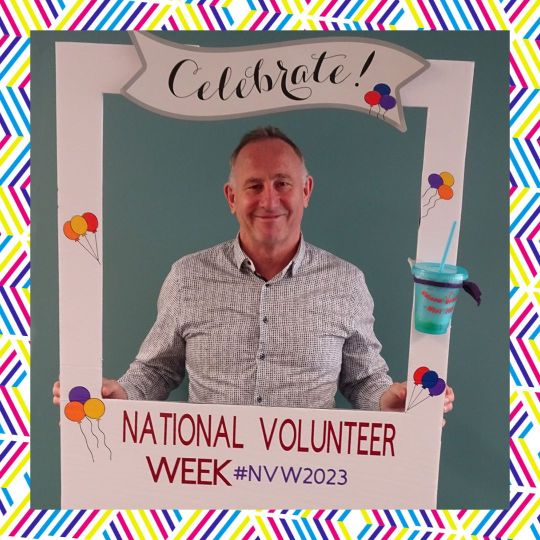


Happy National Volunteer Week! Special shout out to the Member Organizations that received their Celebration Packages. For more information on our Member NVW Celebration Contest visit https://www.volunteergrandeprairie.com/blog/national-volunteer-week/#nvw-contest.
Pictured
Claudia - Bandaged Paws Animal Rescue Association
Heather and Karna - Grande-Prairie Regional Sport Connection
Pamela - Burden Bearers Counselling
Hywel - Resource Centre for Suicide Prevention
Tia - Tiny Hands of Hope
0 notes
Text
Summary of Court Circular entries for February 2021



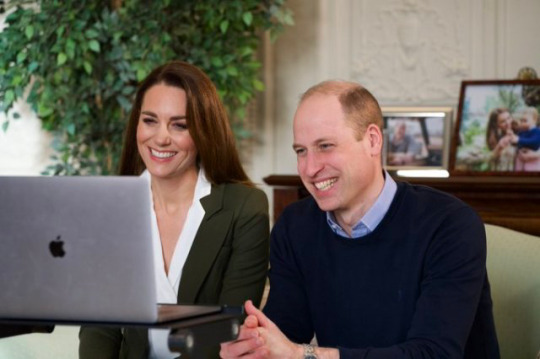
Total: 39 engagements
Phone calls/video calls:
Solo: 34
Joint (w/ Kate): 4
In-person:
Solo: 1
Breakdown:
February 2: Held a Meeting with Mr Anthony Juniper (Chairman, Natural England) via video link
February 3: (3)
Held a Meeting with Mr Mark Bullingham (Chief Executive Officer) via telephone
Held a Meeting with Mr Sanjay Bhandari (Chairman of Kick It Out) via telephone
Spoke to the United Nations Environment Programme’s Young Champions of 2020 via video link
February 4: (8)
Spoke to Ms Anita Bird (Crisis and Home Treatment Team Co-ordinator) and Ms Odette Rawdon (Mental Health and Emotional Wellbeing Practitioner), Lincolnshire Partnership NHS Foundation Trust, Lincoln, by telephone
Spoke to Ms Jessica Griffiths (Eating Disorders Practitioner), Dorset Healthcare University NHS Foundation Trust, Poole, by telephone
Spoke to Ms Sally Trowse (Attention Deficit Hyperactivity Disorder Clinical Nurse Specialist), Pennine Care NHS Foundation Trust, Ashton-under-Lyne, Lancashire, by telephone
Spoke to Ms Julie Metcalfe (Clinical Director for Child and Adolescent Mental Health Services, NHS Greater Glasgow and Clyde, and Consultant Clinical Psychologist) by telephone
Spoke to Ms Julie Henwood (Staff Nurse of the School Aged Immunisation Team), Wokingham Hospital, Berkshire, by telephone
Spoke to Dr Jonathan Layzell (Clinical Director), Rosebank Health Primary Care Network, Gloucester, by telephone
Spoke to Ms Janelle Holmes (Chief Executive Officer), Wirral University Teaching Hospital NHS Foundation Trust, Birkenhead, Wirral, by telephone
Spoke to Ms Helen Kirk (Clinical volunteer vaccinator), Andrews Pharmacy, Macclesfield, Cheshire, by telephone
February 8: Held a Meeting with Mr Jason Knauf (Chief Executive)
February 9: Spoke via video link to nursing students from Ulster University’s School of Nursing, Newtownabbey, County Antrim (w/ Kate)
February 10: (3)
Spoke to Armed Forces personnel involved in the Covid-19 vaccine rollout, via video link
Held a Meeting for the Earthshot Prize
Joined Mrs Ann Radmore (Regional Director, NHS England and NHS Improvement, East of England) at her weekly leadership call with the East of England’s Clinical Commissioning Group Accountable Officers and Trust CEOs via video link
February 11: (7)
Spoke to Mr Adrian Leggat (Technical Delivery Manager), St James’ Hospital, Locksway Road, Southsea, Hampshire, via telephone
Spoke to Ms Candice Scott (Community Receptionist), the Royal United Hospital, Bath, Somerset, via telephone
Spoke to Ms Claire Jukes (Patient Services Manager), University Hospitals Plymouth NHS Trust, Devon, via telephone
Spoke to Ms Jane Buchanan (Domestic Team Leader), Lings Bar Hospital, West Bridgford, Nottingham, via telephone
Spoke to Mr John Brown (Portering Supervisor), Craigavon Area Hospital, Portadown, County Armagh, via telephone
Spoke to Ms Jane Kennedy (Duty Manager), Borders General Hospital, Melrose, Roxburghshire, via telephone
Spoke to Ms Sally Owen (Head of Workforce: Recruitment and Equality, Diversity and Inclusion), Hywel Dda University Health Board, Carmarthen, via telephone
February 12: Held a Meeting with Secretary John Kerry (United States Special Presidential Envoy for Climate) via telephone
February 18: (7)
Spoke to Ms Frances Macneil (Charge Nurse), St Brendan’s Hospital, Castlebay, Isle of Barra, via telephone
Spoke to Mr Shamraze Zeb (Practice Manager), NHS Walsall Clinical Commissioning Group, Walsall, West Midlands, via telephone
Spoke to Ms Cherry Brennan (Senior Matron), Solent NHS Trust, Highpoint, Bursledon Road, Southampton, Hampshire, via telephone
Spoke to Mr John Challenger (Assistant Director of Music), Salisbury Cathedral, Wiltshire, via telephone
Spoke to Ms Ashley Ramsay (Professional Nurse and Service Improvement Lead for Community Nursing), Northern Health and Social Care Trust, Bretten Hall, Bush Road, Antrim, via telephone
Spoke to Dr Natalie Miller (Joint Clinical Lead General Practitioner), Great Chapel Street Medical Centre, 13 Great Chapel Street, London W1, via telephone
Spoke to Ms Jacqueline Seaton (Chief Pharmacist), Powys Teaching Health Board, Glasbury House, Bronllys Hospital, Brecon, via telephone
February 22: Visited King’s Lynn Corn Exchange Vaccination Centre, Tuesday Market Place, King’s Lynn, Norfolk
February 23: (3)
Spoke via video link to medical, charity and voluntary staff across the Commonwealth in advance of Commonwealth Day on 8th March (w/ Kate)
Held a Meeting via video link with a family supported by Asthma UK (w/ Kate)
Held a Meeting via video link with a family supported by Diabetes UK (w/ Kate)
February 24: (2)
Held a Meeting for the Earthshot Prize via video link
Joined Mr Dale Bywater (Midlands Regional Director, NHS England and NHS Improvement) on his weekly leadership call with the Midlands Clinical Commissioning Group Accountable Officers and Trust Chief Executive Officers via video link
February 25: Attended a Fauna and Flora International Executive Committee Meeting via video link
19 notes
·
View notes
Text
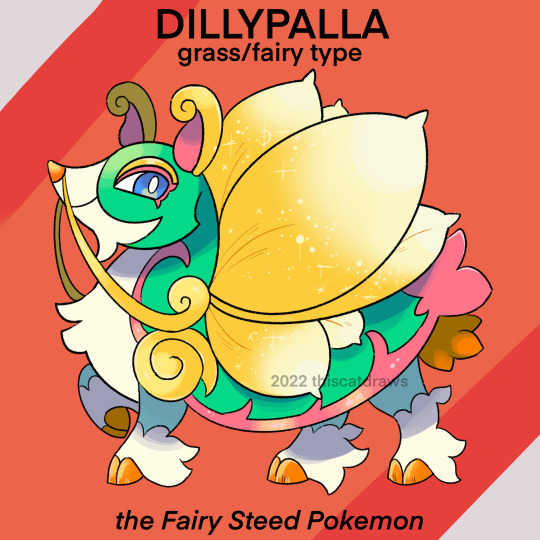

NAME: Dillypalla
The Fairy Steed Pokemon
TYPE: Grass/Fairy
ABILITY: Overgrow (Powers up Grass-type moves when the Pokémon's HP is low.)
HIDDEN ABILITY: Guts (It's so gutsy that having a status condition boosts the Pokémon's Attack stat.)
EGG GROUP: Monster/Grass
HEIGHT: 4'04"
WEIGHT: 28.2 lbs
DESCRIPTION: This majestic Pokémon is capable of bearing the weight of any rider no matter how large, and can gallop on both land and air.
While it is noble by nature, it is also somewhat of a trickster. Dillypalla without a nickname tend to be more mischievous than ones without, and will often wander off-course.
INFO: This Pokémon is based off the theow, a corgi, a knight's steed, and a daffodil. Its name comes from daffoDIL (national flower of Wales) + dill herb + pilipala (butterfly in Welsh).
25 notes
·
View notes
Photo





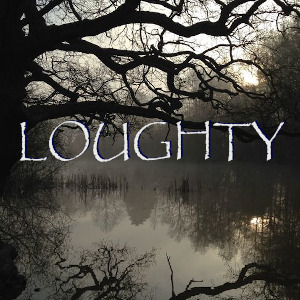
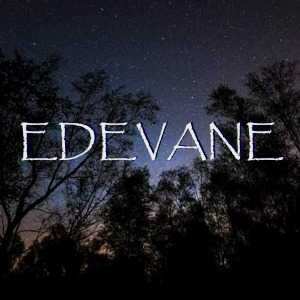
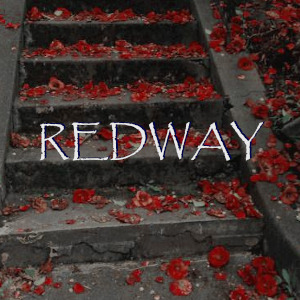

II: WEREWOLVES; OF CLANS & PACKS
The UK and Ireland have long been home to werewolves. All wolves, mythologically speaking, are born from the same two children blessed by the Moon and given the ‘gift’ of lycanthropy. In theory lycanthropy is a generational curse to change into a werewolf under a full moon, where this originated is unsure, but werewolves can be found all across the continents, in every country and in every magical bloodline, or at least something similar. For example in South America, while werewolves exist there are jaguar shifters that change under a moonless night, while there are (unfound) rumors of tiger shifters in the Asian continents but only during the hottest day of the month. Werewolves forms change from region to region, and largely based on the human appearance.
There are three types of wolves; Clan, Pack, and Turned. Clan wolves are werewolves that gained their lycanthropy genetically, passed through 4 or more generations and even if they do not Shift themselves, have a high chance of passing on Lycanthropy to their offspring. Clans are always related by blood to other clans and packs. Generally speaking Clan werewolves are the equivalent of pureblood lines or long-standing halfblood lines, they have traditions, specific genetic looks, and a home territory. Packs are werewolves who have been Turned and formed bands of werewolves, they may be linked to a certain territory, and treat or marry with other werewolf clans. Packs may also turn into Clans if they have offspring with other werewolves and create at least a 4 generational line of genetically linked werewolves. It’s not uncommon for large Clans to have Branch Packs with different surnames that eventually turn into their own Clans. The final type of wolf is a Turned wolf, a first generation werewolf that has a 10% chance of their offspring also carrying Lycanthropy. These wolves often join Packs, or sometimes are the lover of a Clan werewolf and willingly took the Bite to Shift.
Clans however are the most prominent and strongest of the werewolves. They have their own yearly Meets (at the Full Moon in the Summer and Winter), their wands are made by either the Hawkins or the O’Hmalls, they intermarry among each other and have their own form of Hierarchy. The current dominant Clan is the O’Hmalls, with a Clan nearly 100 strong and almost 100% werewolf. The oldest clan are the Edevanes who boast an unbroken line of wolves since the Emperor Julius Caesar, the newest Clan is the Hywell’s whose dynasty began in 1999. The Hawkins are wandmakers who have ruled their territory for nearly 600 years, and their rival Clan are the Bodkins on their southern border who have been around for 500 years. The Blythsea’s are the most easy going of the Clans, and take up a long stretch of the Eastern English coastside, they number around 70 strong and rarely get involved in werewolf political matters. Similarly the Loughty Clan is Irish, and largely keeps to themselves and the other Irish Packs. The Redways are a dying Clan, in disgrace after siding with Voldemort during the Wars, their line is mostly extant with only 2 young werewolves born in the last 25 years, Penny is related to them through her Mother but does not treat with them. The Dacha Clan is another werewolf clan that associated with Voldemort during the War and has been out of the limelight for nearly 20 years, rebuilding strength and trust. Before the Rise of Voldemort there were 15 Clans which have gone extinct during this era, these include; Whitefields, Axworthy, Spring, Flannery, MacAuley, Bowmans.
Wolf Clans often marry among each other, and the surname that passes is either decided before having children, or by Clan priority/dominance. Clan Priority is as follows; a Redway, a dying Clan, marries a more dominant Clan then the Redway has naming priority in order to revive their Clan. Or it goes by Clan Dominance, a Redway marries a Hawkins and the Hawkins name is given priority because they are more dominant. It has nothing to do with gender, Andromeda Hawkins married and had children with an Axworthy and a Cross. But the Hawkins were given priority naming because they were the most dominant Clan. Children may abandon their surname in favor of another Clan. If Penny decided she wanted to become a Redway she would switch her surname of Hawkins to Redway and join that Clan as a member instead. This is done for many reasons, friction within families, loyalty to a certain parent, or an attempt at a political move such as becoming an Alpha or moving up the foodchain if you are from a lower Clan branch. Bastards generally belong to the most dominant Clan or Pack of which they are born, but there is no difference between a child born of wedlock and one of marriage or mating.
Packs work in a similar fashion, in an attempt to become a Clan the whole Pack will collectively change their surname to one of their choice, and then marry among each other to create a related genetic line. Packs are usually very small, numbering anywhere between 5-15 wolves and can be found all over the country. Some Packs don’t want to become Clans, and prefer to just take in newly Turned wolves and take on a Pack name as a symbolic gesture. Some well-known Packs in the UK/Ireland include; Cross, Fairdale, Faulkner, Sharpe, Galloway, Deering and Greyback (extinct). They of course aren’t the end-all-be-all of werewolves. There are many many smaller knit Packs that don’t go to Meets or make contact with other werewolves, keeping among themselves, and many werewolves after registering with the Ministry do not seek out Packs or Clans.
There are other werewolf packs that have even left the country all together to form their own Packs and Clans, or to escape war, famine, or more territory. The jokes is that all Werewolf Clans and Packs are related to each other after some fashion, and to some extant that cane be true. The Sanchez Pack from Southern California married into the Hawkins Clan that produced the line of Leander, Linus and Zephyr, and the Hawkins are also distantly related to the Australian wolves the Andersons, and Rhett Anderson has been adopted into the Hawkins clan through bloodties. All wolves are born from the same wellspring of magic, so where a wolf finds a Pack or Clan, they will also find a home. All wolves band together under the blessing of the Moon.
#on Penny#Penny Hawkins#werewolf clans#werewolf packs#werewolf lore#// round 2 of teddy overthinks UK/Ireland werewolf lore#// someone stop me
12 notes
·
View notes
Text
Huntington Estate Music Festival bids farewell in 2019
Australia’s most famous chamber music event will close its doors in November 2019 after 30 stellar years of music, wine, food and friendship. Tickets to the 30th and final Huntington Estate Music Festival go on pre-sale (by invitation only) throughout mid-February, with remaining tickets available to the general public on 1 March.
In 2019, the family owned and run Huntington Estate winery will celebrate 50 years of operation, and 30 years of presenting the Festival. Owners Tim and Nicky Stevens have reluctantly decided to end the Festival in its prime in order to focus on the core business of growing grapes and making wine.
“It’s been a privilege to partner with Carl Vine and Musica Viva Australia to host the Huntington Estate Music Festival in Mudgee for the past 13 years,” says Nicky Stevens, Festival CEO and General Manager of the winery.
Bob and Wendy Roberts established Huntington Estate in 1969 by and, with Richard Tognetti and the Australian Chamber Orchestra, established the Festival in 1989; the first of its kind in Australia. Since 2006, the Stevens family has presented the Festival, with Carl Vine AO as Artistic Director, and Musica Viva providing the artistic content. Fine music, wine, local produce and a beautiful countryside location have proved a winning combination for audience, musicians and critics alike.

Discussing the reasons for the change, Tim Stevens, Chief Winemaker, noted, “An event of this stature and duration requires weeks of intensive preparation. Our barrel hall is transformed into a concert hall, the packing shed into an art gallery and the grounds into a restaurant and bar. Presenting ten concerts across eight days is exhilarating but exhausting for all concerned. Running a small business is already more than a full-time job, and we have taken the decision that the grapes, the wine, our young children and staff must come first.”
Nicky adds, “The Festival has enriched our lives, bringing so many wonderful people and experiences into our winery. We’ve shared some extraordinary moments with our audience over the years and this spring, we look forward to presenting an unforgettable Festival, a fitting finale to this amazing event.”
The final Festival is set to be the best musical vintage yet. Artistic Director Carl Vine said, “Devising musical content for the last Huntington Festival ever has been a daunting prospect. In the end I had to let the magic of this unparalleled event speak for itself, and concentrated simply on assembling a stellar collection of chamber musicians from around the world and compiling the most interesting, satisfying and surprising repertoire I could find.’
Beyond 2019, Huntington Estate will continue its long association with chamber music as an active wine sponsor of Musica Viva, Opera Australia Foundation and the Omega Ensemble, and by supporting music development in the community of Mudgee.
Musica Viva CEO Hywel Sims said, “We are proud to have been so closely associated with the wonderful team at Huntington Estate for the past 13 years and celebrate their unique contribution to chamber music in Australia. We’re delighted that Huntington Estate will continue our association as wine sponsor for the Musica Viva Festival, our concerts and our other activities in NSW.”
Nicky concluded, “Huntington Estate is so grateful for the support of Musica Viva, our many partners including Theme & Variations Piano Services, the ABC and our audience and artists who come from across Australia and all corners of the globe.”

Huntington Estate Music Festival
Opening Weekend: 16 & 17 November 2019
Main Festival: 20-24 November 2019
Ticketing: For your invitation to buy tickets or for more information, email [email protected] or go to www.huntingtonestate.com.au/music-festival or call 02 63733825
For further information, photos and interviews, please contact:
Nicky Stevens, Owner/General Manager Huntington Estate on 02 6373 3825 or [email protected]
Adele Schonhardt, Media & Communications Manager, Musica Viva on 03 9645 5092, 0457 727 379 or [email protected]
David Cumming, Define Wine Marketing & Communications on 0414 736 342 or [email protected]
Huntington Estate is one of Mudgee and NSW’s most respected winegrowers. Established in 1969 by Bob and Wendy Roberts, the winery is an icon of the region. Current owners, Tim and Nicky Stevens continue to run the winery by five guiding principles: Estate grown, made and bottled, wines are built to age, the reds are released at four to five years, they are only sold direct and substance is key. The winery has become renowned for their Music Festivals that has been performed for over 26 years. The Huntington Estate Music Festival has been described as “‘one of the best chamber music festivals in the world.”
1 note
·
View note
Text
A brand new initiative has been launched in Carmarthenshire. The Carmarthenshire LGBTQ+ Project, a National Lottery funded venture, aims to create a more inclusive, welcoming and safe county for anyone who identifies as LGBTQ+.
Launched by CETMA, Llanelli, the project is set to last for at least the next three years and is looking to help set up and maintain LGBTQ+ support groups or ‘hubs’ at various points across the county. The project will also look to work with any current groups, helping them to grow, become self-sufficient and increase their membership.
Further to promoting and establishing support groups across the county, the project aims to set up a specific LGBTQ+ forum. This forum will involve representatives from the LGBTQ+ support groups, councils, services such as Dyfed Powys Police Force and Hywel Dda Health board as well as any pro LGBTQ+ charities and organisations in the county. The forum will meet regularly to discuss and resolve any issues pertaining to the LGBTQ+ community in the county. The forum will also allow the LGBTQ+ community in the county to engage more effectively with the Local Authority and respective services.
Also the project will look to establish various LGBTQ+ awareness and educational days across the county, promoting everything from hate crime awareness, mental health, relationships and what it means to be LGBTQ+.
The project will also be looking to recruit volunteers to help deliver it’s aims. The ethos of being community led is integral to the project.
Coordinating the project is a member of the LGBTQ+ community, local to Llanelli. Alexander Bryant-Evans is a keen advocate of promoting equality and diversity. Having headed up regional and national equalities campaigns through his trade union, GMB (PrEP availability on the NHS in England and abolishment of the gay men blood donation deferral period), Alex’s passion for a more equitable society is evident in the work he has done as a founding member of the Llanelli Pride Committee. Alex is also studying for a Master’s Degree – MA Equity and Diversity in Society.
Being a gay man, Alex has seen the lack of support available to members of the LGBTQ+ community in Carmarthenshire over the preceding years and is excited to be playing a part in creating a more welcoming, safe and inclusive county for all those who identify as LGBTQ+ and allies.
If you would like to know more about the project or get involved, you can get in touch with Alex via his email: [email protected].
You can also follow the project on social media too:
Facebook: @carmslgbtqplus
Twitter: @CarmLGBTProject

#LGBT#LGBTQ#LGBTQPlus#LBGT#Proud#Pride#Carmarthenshire#Wales#Cymru#Welsh#Equality#Equity#Support#Social#Networks#Inclusive#Inclusivity
0 notes
Text
Dry Granulation Machines Industry: Future Demand, Market Analysis & Outlook to 2024
The global Dry Granulation Machines Market research report studies market overview defining; definition, types, applications latest trends to identify the revenues and the progress of the market over the forecast period. The report offers preventive and premeditated management along with emphasizes the summary of the global Dry Granulation Machines market along with classifications and market chain structures. It also highlights authorized statistics of the global Dry Granulation Machines market.
Get a Sample PDF Report: https://www.acquiremarketresearch.com/sample-request/113634/
Improvement approaches and plans are examined just as assembling procedures and cost structures are additionally investigated. This report likewise states import/trade utilization, free market activity Figures, cost, value, income and gross edges. The report centers around Global real driving Dry Granulation Machines Industry players giving data, for example, organization profiles, item picture and determination, limit, generation, value, cost, income and contact data.
Based on products type, the report describes major products type share of regional market. Products mentioned as follows: Tumbling Granulators, Mixer and Planatary Granulators, Fluidized Granulators
Leading vendors in the market are included based on profile, business performance etc. Vendors mentioned as follows: Gerteis Maschinen, Fitzmill, GEA Group, Powertec, lbbohle, Trustar Pharma & Packing Equipment, Changzhou Hywell Machinery, LFA Machines Oxford LTD, Yenchen Machinery
Based on Application, the report describes major application share of regional market. Application mentioned as follows: Mining, Agriculture, Food Processing, Chemical Industry, Pharmaceutical Industry, Others

The fundamental purpose of this Dry Granulation Machines market report is to provide a correct and strategic analysis of the Profile Projectors industry. The report scrutinizes each segment and sub-segments presents before you a 360-degree view of the said market.It provides a deep insight into the industry parameters by accessing the market growth, consumption volume, the upcoming market trends, and the different prices variation for the forecast year.
The research methodology of the market involves both primary as well as secondary research data sources. It commits different factors affecting Dry Granulation Machines industry such as market environment, various policies of the government, past data and market trends, technological advancements, upcoming innovations, market risk factors, market restraints, and challenges in the industry.
Get Discount on this Report: https://www.acquiremarketresearch.com/discount-request/113634/
The report grants knowledge on the accompanying pointers:
– Market Penetration: Comprehensive data on the items collection of the top players in the Dry Granulation Machines market.
– Product Development/Innovation: Detailed knowledge on the forthcoming advances, R&D actions, and product dispatches in the Dry Granulation Machines market
– Competitive Assessment: top to bottom appraisal of the market systems, geographic and business sections of the main players in the Dry Granulation Machines market
– Market Development: Comprehensive data about developing markets. This report breaks down the market for a different area overall topographies
– Market Diversification: Exhaustive data about new items, undiscovered topographies, late advancements, and capital exposures in the Dry Granulation Machines market
With tables and figures broken down on worldwide Global Dry Granulation Machines market, this research gives key measurements on the condition of the business and is a profitable wellspring in direction and course for organizations and people intrigued by the market.
For compiling the report, data has been derived from a number of paid and unpaid sources such as presentations, white papers, journals, and press releases. It offers in-depth information obtained through extensive primary and secondary research methods. The information has been further assessed using various effective analytical tools. Therefore, the report provides a 360-degree view of market.
Read Complete Report With TOC: https://www.acquiremarketresearch.com/industry-reports/dry-granulation-machines-market/113634/
At last, It includes the methodical description of the various factors such as the Dry Granulation Machines market growth and a detailed information about the different company’s revenue, growth, technological developments, production and the various other strategic developments.
If you have any special requirements, please let us know and we will offer you the report as you want.
0 notes
Photo


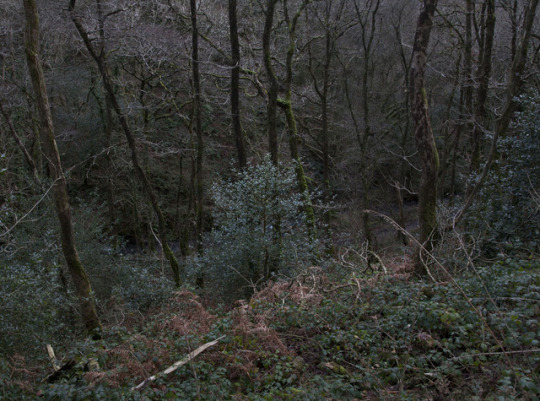


Mark Griffith is a photographer based in South Wales, U.K. He graduated in 2013 with a degree in photojournalism from the university of Wales/ Trinity St David. His work has been widely featured throughout the world and exhibited across the country. His clients include The Telegraph Magazine, Channel 4, The Smith Journal and The Financial Times among others. His work ‘The Healing Land’ received an honorable mention at the Moscow International Photography awards and in addition the work was voted as one of the ten best features of the week by Fotografia magazine. He was highly commended at the British Life Photography awards in the portrait category. And recently he has been selected for the final 30 at the Fotofilmic awards and will exhibit in L.A, Vancouver and Melbourne. He enjoys engaging with new and interesting characters and landscapes and working on long term documentary projects.
The Black Heathen: 'The Black Heathen' or gentiles nigri was a name that the Welsh called Viking invaders. The term means a dark and unwanted presence that do not belong to a widely held religion. The Black Heathen were feared throughout the land and attacks along the Welsh coastline lasted for over 200 years from the first recorded incident in 795 AD. Wales was repeatedly raided, especially by the Norse from the Hiberno-Norse kingdoms of Dublin and Limerick. Kings like Rhodri ap Merfyn, known as Rhodri Mawr (the great, 844 to 878 AD) and Hywel Dda (the Good, 900 to 950 AD) were able to rally large numbers of Welshmen to the defense of their lands with stubborn resistance, preventing the formation of large Norse kingdoms such as existed elsewhere in the British Isles. The places pictured in this series are sites where attacks were frequently recorded. Wales suffered heavily at the hands of “The Black Heathen” and blood was spilled along the shores, fields and forests in the southern regions from relentless attacks endured. To die on the sword of “The Heathen” was a fate of many Welshmen as the black tide of invaders came wave after wave.
View the entire series on our website.
#pool resources#Mark Griffiths#feature#series#the black heathen#zine#publication#photography#photographer#vikings#wales
17 notes
·
View notes